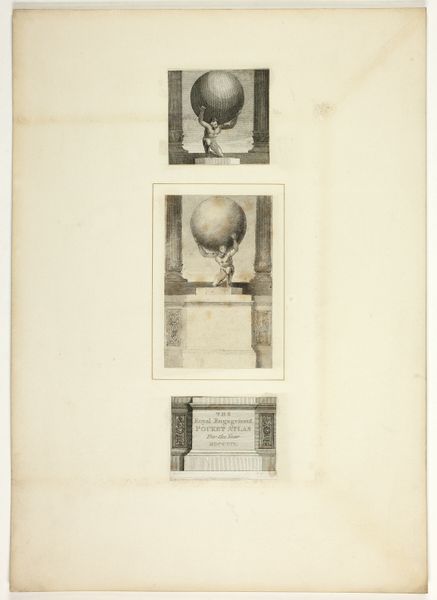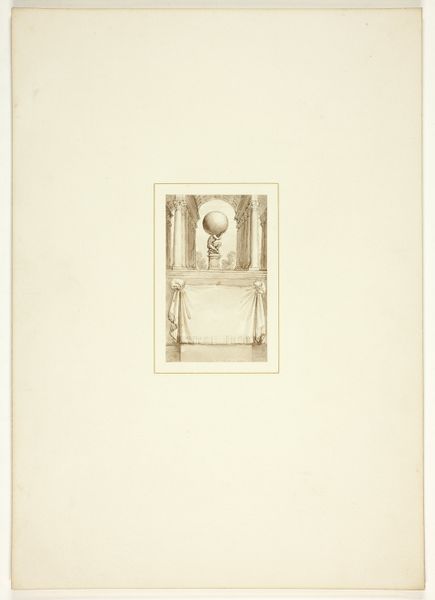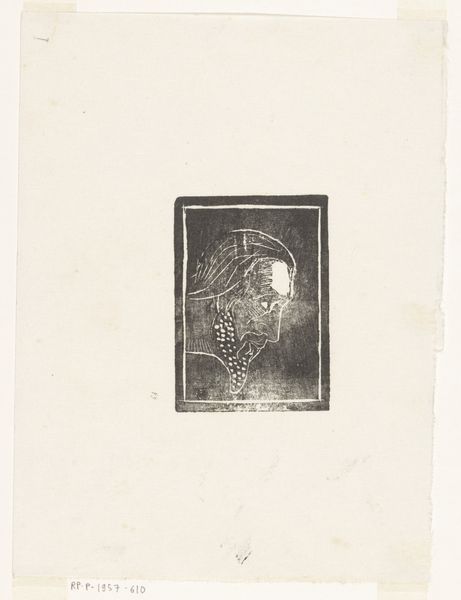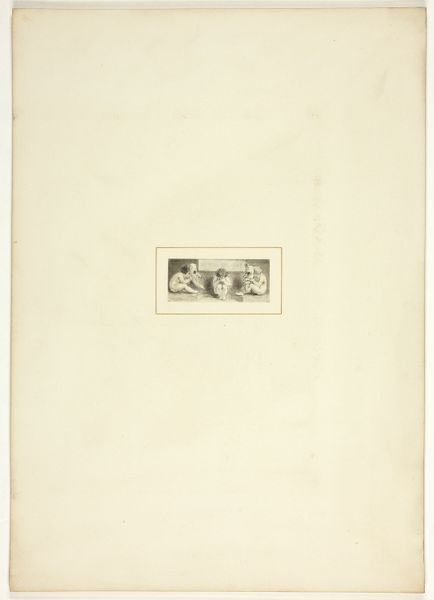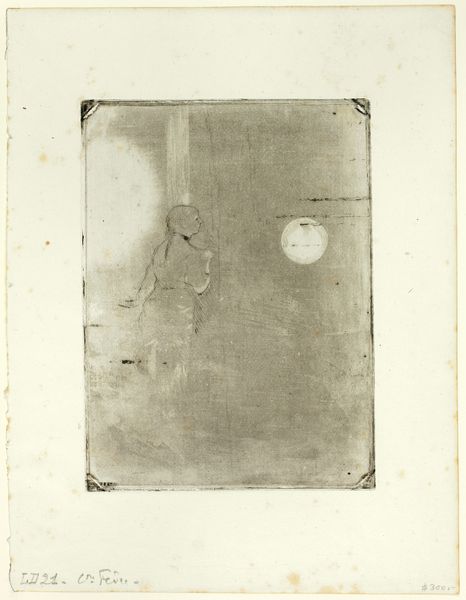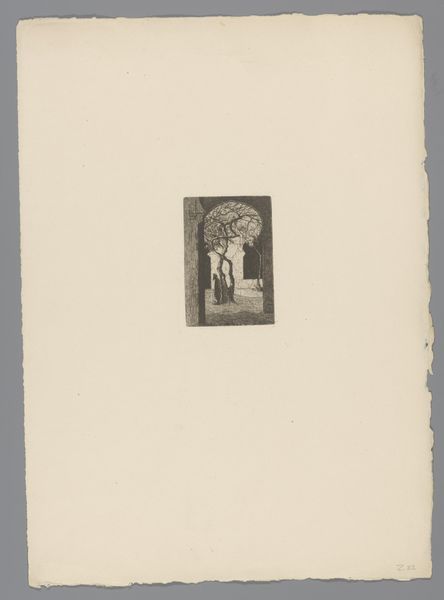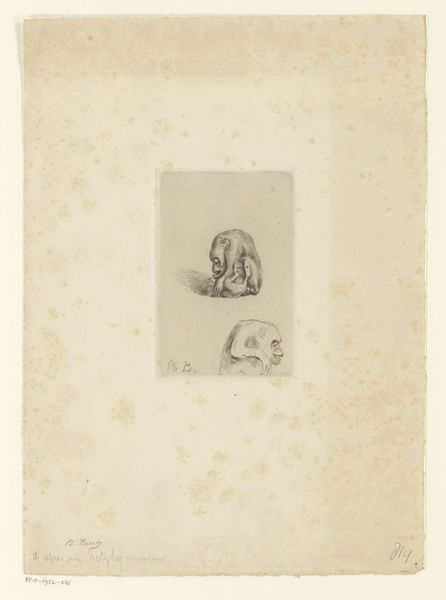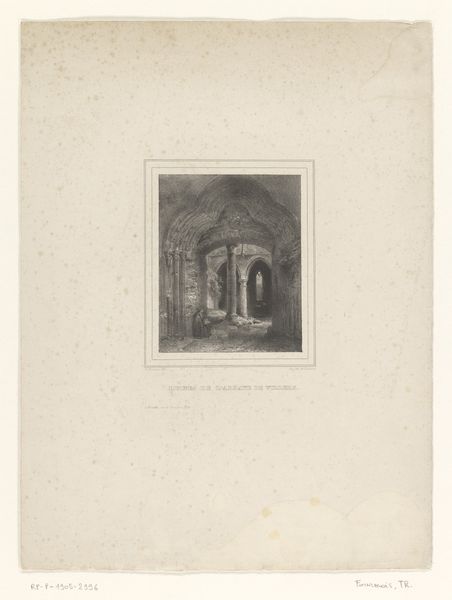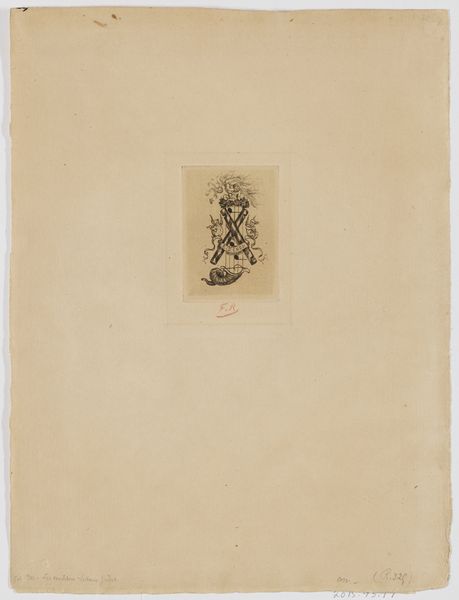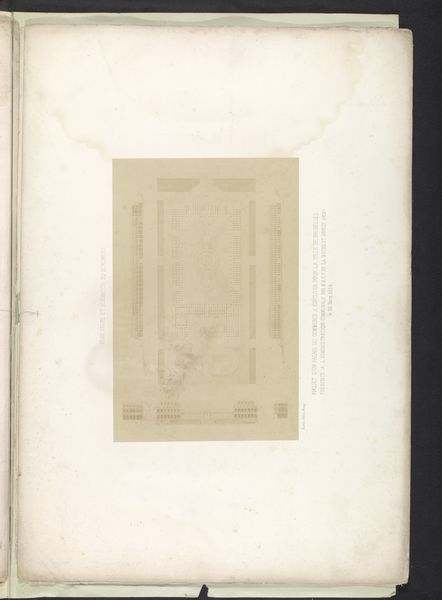
drawing, print, paper, ink
#
drawing
# print
#
landscape
#
figuration
#
paper
#
ink
#
romanticism
#
history-painting
Dimensions: 101 × 60 mm
Copyright: Public Domain
Curator: This is Thomas Stothard's "Study for a plate from The Task," created around 1800. It employs ink on paper and resides here at The Art Institute of Chicago. Editor: Immediately, I'm struck by its monumental feel despite its relatively small scale. The composition is so balanced and the light so even, it almost reads as neoclassical in its austerity. Curator: It's fascinating to consider how this work grapples with themes of burden and responsibility, perhaps reflecting the socio-political weight felt by England at the turn of the century, engaged in war and confronting significant social change. The figure is clearly meant to evoke Atlas, bearing the weight of the world. Editor: From a purely formal standpoint, notice how the sphere atop the figure is the focal point. The artist uses precise linear strokes and a limited tonal range. The drawing focuses attention on the monumental sphere, emphasizing its volume and geometric perfection. Curator: Indeed. We also have to account for this work as a reproductive print study meant for a broader audience and circulating in the form of book illustration. Considering how books allowed access to information for middle and working classes at the time, how does this image operate as propaganda or political rhetoric? Editor: The engraving is visually compelling and precise; the clean lines and even distribution of light suggest a level of detached objectivity. This reinforces the perceived universality and timelessness of the themes it represents: duty, resilience, human struggles... Curator: I agree; but the stoic portrayal also elides individual experiences of oppression, universalizing an ideal of burden-bearing and downplaying disparities. The image presents this as noble and neglects the systemic issues creating said burdens. Editor: A valid point. Considering these layered tensions is how we deepen our appreciation for a work that, on its surface, seems deceptively simple. Curator: Precisely. Examining the piece in light of historical inequalities challenges the romanticism associated with the lonely man doing his duty. Editor: In that light, looking at how those lines, the composition, even the balanced tonality – could all suggest stability even if it masks real struggle opens further insights for us.
Comments
No comments
Be the first to comment and join the conversation on the ultimate creative platform.
